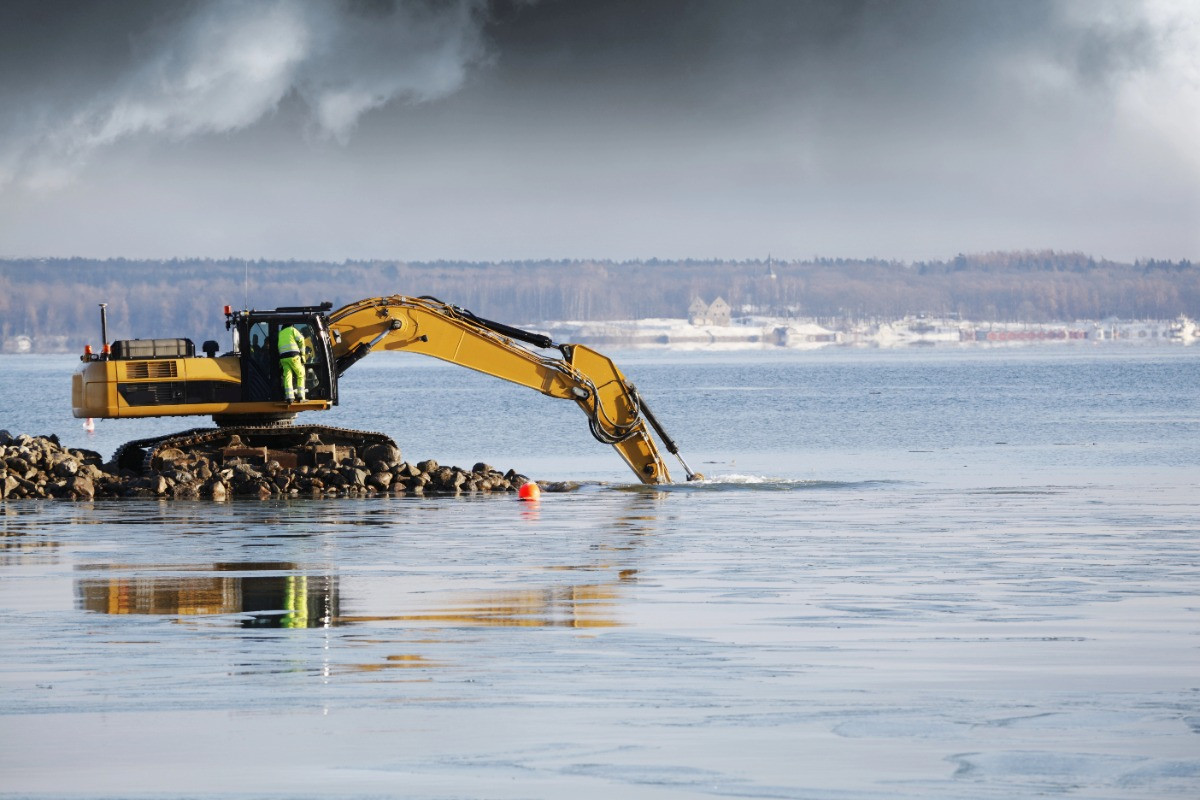
Benefits of Dredging & Its Impact on the Environment
Understanding Dredging
Dredging, the process of removing sediments and debris from the bottom of lakes, rivers, harbors, and other water bodies, has been a cornerstone of maritime development for centuries. Its origins can be traced back to ancient civilizations where it was primarily conducted to improve navigation channels and protect settlements from flooding. Over the years, the evolution of dredging has been marked by significant technological advancements, from manual operations using simple tools to sophisticated, automated systems powered by cutting-edge technology.
Technological Advancements in Dredging
The technological leap in dredging equipment and methods has dramatically increased efficiency and effectiveness. Modern dredgers are equipped with GPS and sophisticated monitoring systems that allow for precise operations, minimizing environmental impact while maximizing the removal of unwanted materials. These advancements have expanded the scope of dredging operations to include not only maintenance of waterway depths but also large-scale environmental restoration and land reclamation projects.
4 Types of Dredging Techniques and Their Applications
Dredging techniques vary depending on the purpose of the operation, the type of material to be dredged, and the environmental considerations at the site. The most common types include:
1) Mechanical Dredging: Utilizes a crane and bucket system to scoop up sediment. This method is often used for targeted dredging operations, such as removing debris or contaminated sediments.
2) Hydraulic Dredging: Employs a suction pipeline to vacuum sediment and water. This technique is frequently used for large-scale projects, including navigation channel maintenance and beach nourishment.
3) Cutter Suction Dredging: Combines a cutting tool with hydraulic suction, ideal for hard-packed soil or clay. It's widely used in canal building and port development.
4) Environmental Dredging: Aims to remove contaminated sediments with minimal disturbance to the aquatic environment. This approach often involves precision dredging equipment and techniques.
Benefits of Dredging
Navigation: One of the primary benefits of dredging is the maintenance of navigable waterways, which are vital for commercial shipping. By removing sediment buildup, dredging ensures that channels remain deep enough for large vessels, thereby preventing groundings and collisions. This not only facilitates efficient cargo transport but also contributes significantly to global trade and economic growth.
Economic Advantages: Dredging activities bolster local economies through the improvement of trade capabilities and the creation of jobs. Ports and harbors that accommodate larger vessels can increase their cargo throughput, enhancing their competitive edge in international trade. Additionally, the dredging industry itself generates employment opportunities in construction, engineering, environmental monitoring, and project management.
Environmental Restoration: Dredging plays a crucial role in environmental restoration efforts, such as beach nourishment and the creation of wetlands. By relocating sand from areas where it is plentiful to eroding beaches, dredging helps to protect coastal properties and habitats. Similarly, the excavation of new water bodies and the restoration of natural water flow can rejuvenate wetlands, providing essential habitats for a variety of species.
Flood Prevention: By increasing the capacity of rivers and channels to carry water, dredging can play a significant role in flood prevention. This is particularly important in areas prone to heavy rainfall or where sedimentation significantly reduces water flow. Strategic dredging operations can protect inland areas from the devastating effects of floods, safeguarding communities and reducing the economic impact of natural disasters.
Environmental Impacts of Dredging
Dredging, while beneficial for navigation, economic activity, and certain aspects of environmental management, carries with it a range of environmental impacts that must be carefully managed. These impacts primarily concern the aquatic ecosystems directly affected by dredging operations and can extend to broader environmental concerns.
Ecosystem Disturbance: The removal of sediment can destroy or alter the habitats of numerous species, including fish, invertebrates, and plants that rely on specific conditions for breeding, feeding, and shelter. For instance, dredging can lead to the loss of benthic organisms, which play a crucial role in the aquatic food web, affecting species up the chain.
Water Quality: The suspension of sediments during dredging operations increases water turbidity, which can severely impact aquatic plants and animals. High turbidity levels reduce the amount of sunlight reaching underwater plants, affecting photosynthesis and, consequently, oxygen levels in the water. Also, dredging can release pollutants trapped in sediments, such as heavy metals, pesticides, and other chemical compounds, further degrading water quality and posing risks to aquatic life and human health.
Sediment Displacement: The displacement of sediments can have far-reaching effects beyond the immediate area of dredging. Altered sediment composition and distribution can affect the downstream ecosystems, changing the physical environment in ways that may not be suitable for the existing flora and fauna. Also, changes in sedimentation patterns can lead to erosion or accretion in unexpected areas, potentially causing problems for coastal structures and habitats.
Mitigating the Environmental Impacts of Dredging
Given the potential environmental impacts of dredging, it is crucial to implement measures to mitigate these effects. This involves a combination of regulatory frameworks, sustainable dredging practices, and ongoing monitoring and management.
Regulatory Frameworks: Globally, various laws and regulations have been established to govern dredging activities, aimed at minimizing environmental damage. These include requirements for environmental impact assessments (EIA) before the commencement of dredging projects, permits specifying the conditions under which dredging can occur, and adherence to international conventions such as the London Convention, which regulates the disposal of dredged material at sea.
Sustainable Dredging Practices: Technological innovations in dredging equipment and techniques offer ways to reduce environmental impacts. For example, the use of silt curtains can help contain the spread of suspended sediments, while more precise dredging machinery can minimize the disturbance to the seabed. Additionally, strategic planning of dredging activities to avoid critical habitats and breeding seasons can help protect vulnerable species.
Monitoring and Management: Ongoing environmental monitoring is essential to understand the impacts of dredging and to adjust practices as necessary. This can include pre- and post-dredging surveys of water quality, sediment composition, and marine life. Adaptive management strategies allow for the modification of dredging practices in response to observed environmental conditions, ensuring that the least possible harm is done to the aquatic ecosystem.
Through a combination of careful planning, regulation, technological innovation, and adaptive management, it is possible to mitigate these impacts, ensuring that dredging practices contribute to sustainable development goals and overall benefit our shared environment.
Future Prospects of Dredging
As we look toward the future, the field of dredging stands on the cusp of significant technological and methodological advancements. These developments promise not only to enhance the efficiency and effectiveness of dredging but also to align these critical activities more closely with the pressing needs of environmental conservation and sustainable development.
Technological Advances: The dredging industry is poised to benefit from a wave of technological innovations, ranging from more precise and less intrusive dredging equipment to advanced monitoring systems that can track the environmental impact of dredging in real-time. Autonomous or remotely operated dredgers, equipped with AI-driven systems for optimal route and operation planning, are expected to reduce human error and minimize environmental disruption.
Sustainable Development Goals: Dredging practices are increasingly being evaluated through the lens of global sustainability efforts. This includes a greater emphasis on projects that not only meet human needs for navigation and economic development but also contribute to the restoration and preservation of aquatic ecosystems. The integration of dredging activities with coastal restoration projects, such as creating wetlands and other natural barriers, exemplifies this shift towards more holistic environmental stewardship.
Collaboration and Education: The future of sustainable dredging will rely heavily on collaboration among stakeholders, including governments, industry, environmental organizations, and local communities. Educating these groups about the importance of sustainable dredging practices and the potential impacts of dredging on ecosystems will be crucial for garnering support for environmentally responsible dredging projects. Additionally, fostering an environment of innovation and sharing of best practices internationally can accelerate the adoption of more sustainable dredging techniques worldwide.
Get the Best for Aquatic Dredging at Wetland Equipment
For those seeking the best in amphibious excavation equipment, Wetland Equipment stands out as a leader in the field. With cutting-edge technology and commitment to sustainability, we offer solutions that not only meet the rigorous demands of modern dredging projects but also align with the critical need for environmental stewardship.
Let's work together to navigate the challenges of today while preserving the health of our waterways for future generations. Choose Wetland Equipment for your next dredging project and make a positive impact on both your operations and the environment.

